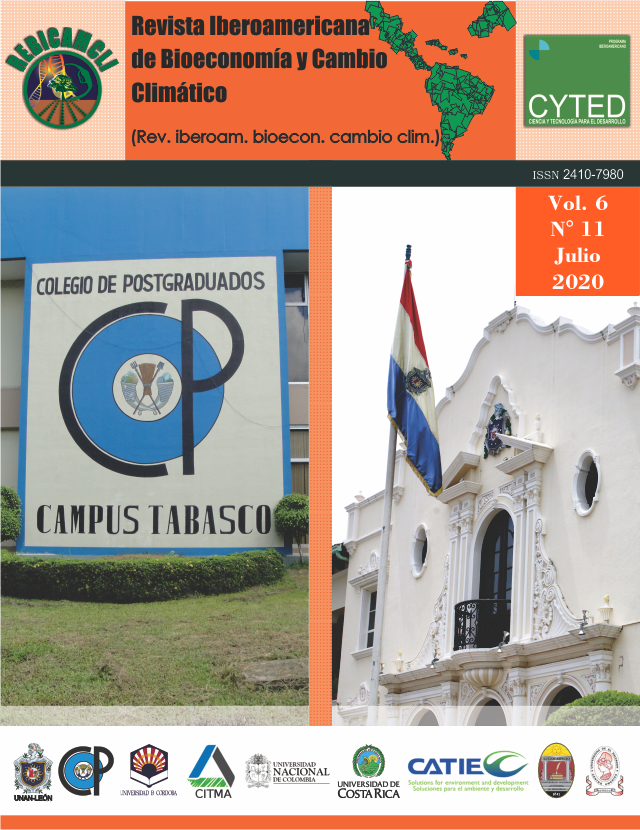Change of soil use and climate variability in Chiautzingo, Puebla, Mexico
DOI:
https://doi.org/10.5377/ribcc.v6i11.9421Keywords:
Enviromental degradetion, Perception, Forest areaAbstract
The modification of the vegetal cover It´s obvious and increasing, the main causes are the different socioeconomic activities that the population develops. Climate is an essential factor in the distribution of biotic patterns of ecosystems and, in the same sense, ecosystems, through their cover, can influence climate variability. Studies that consider the change in land use, vegetation and climate are relevant to determine processes related to soil degradation, loss of biodiversity and climate variability. This study analyzed the change in land use and climate variability from 1984 to 2018 in the municipality of Chiautzingo, Puebla, Mexico from Landsat satellite images in Geographic Information Systems. Historical data from three weather stations were analyzed and through a survey of producers, information was collected on the perception of both the phenomenon of land use change and climate variability. The change in land use is related to the loss of forest area, with an annual exchange rate of -0.57%. The increase in the area devoted to protected agriculture was 310.58 hectares, which puts pressure on biotic and abiotic resources. It was also found that there is climatic variability, which is perceived by the population. It is necessary to have this analysis to identify the areas that have the greatest environmental degradation, and as a basis for planning the use and management of natural resources.
Downloads
Downloads
Published
How to Cite
Issue
Section
License
Copyright © 2022 Rev. iberoam. bioecon. climate change Graduate School and UNAN-León, School of Agricultural and Veterinary Sciences / Department of Agroecology / Center for Research in Bioeconomy and Climate Change (CIByCC).







